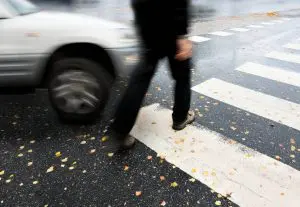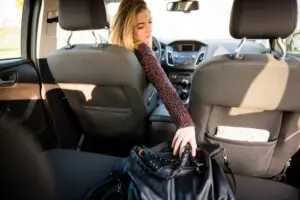Pedestrian accidents can cause serious injuries. Unlike drivers or passengers in cars, pedestrians have no protection from impact. This makes them more vulnerable in accidents. If you are hit by a car, you may be entitled to compensation for medical expenses, lost wages, and pain and suffering. It doesn’t matter who caused the accident; if you are hurt, you have the right to seek compensation. A skilled pedestrian accident attorney at Munley Law can help protect your right to the compensation you deserve. Regardless of who was at fault for the accident, victims deserve to be compensated for the pain and suffering they have endured. Experienced pedestrian accident attorneys with a winning track record, like those at Munley Law Personal Injury Attorneys, can help to ensure that your rights are protected and that you receive the compensation that you deserve and that you are entitled to.
Steps to Take if You Are Injured as a Pedestrian in a Car Accident
- Call the police; inform the operator of injuries and care that may be needed. A police report will be compiled including the accident particulars, witness statements, accident diagrams, and investigators’ indications of fault.
- Get contact information from the driver(s)and any possible witnesses. Take notes if you can.
- Get the driver’s insurance provider information.
- Document the accident by taking videos and pictures; take pictures of injuries, too. If someone makes a statement, and if you are able to record, do so with your phone.
- Call your insurance company and report the accident. Take notes of who you spoke with and when you called. Do not express blame, fault, or any particulars other than the event specifics.
- Seek medical care or go to see your doctor as soon as you can after the accident; although you may not feel any symptoms immediately, you may develop symptoms several days after. Document your doctor’s care and visits on your claim.
- Call a pedestrian accident attorney at Munley Law.

What Types of Compensation Is Available for Injured Pedestrians?
Once fault is determined, pedestrian accident victims can receive two types of damages: economic and non-economic. Economic damages cover costs with a clear monetary value, like medical bills. Non-economic damages compensate for pain, suffering, and emotional distress caused by the accident.
- Economic damages: This includes any compensation you can recover for financial losses from the pedestrian accident. Current and future medical expenses, lost income, and loss of future earning potential are all-inclusive and part of the victim’s “economic damage.”
- Non-economic damages: These types of damages are more subjective. They refer to any non-monetary losses you may have, such as pain and suffering, loss of consortium, and emotional anguish.
Full tort lawsuits can occur here because pedestrians are not restricted to only seeking monetary losses.
How do I start my claim to receive compensation?
If you have been injured as a pedestrian you can use your own health, car, or Personal Injury Insurance (PIP) to pay your bills from the pedestrian accident. If you do not have insurance of your own or are not covered by someone else’s policy, the vehicle owner involved in the pedestrian accident will cover the claim and be accountable.
If the driver flees the scene after hitting the pedestrian, then the pedestrian does have the option to use their uninsured/underinsured motorist coverage to pay for their expenses.
Ultimately, fault will have to be established to determine who is responsible for the expenses that have resulted from their negligence.
How Much Time Do I Have to Report My Pedestrian Accident Claim?
The statute of limitations for pedestrian-involved accidents varies from state to state. They range from two to six years. For example, in Pennsylvania, you have two years from the date of the pedestrian accident to file a pedestrian accident claim. The sooner, the better — witness testimonies can become critical and memories become much more distant as time passes.
Who Is at Fault in a Pedestrian Accident?
Multiple parties can be at fault, depending on what transpired. Probable parties are:
- The driver: If the driver failed to follow the rules of the road, they could be held responsible for your accident.
- The vehicle manufacturer: If there was a defect in the car that caused the accident, such as faulty brakes, the manufacturer may be liable for the accident.
- The government: If there is a problem with the crosswalk or the lighting system, the responsible party may be a government agency.
- The pedestrian: In some cases, the pedestrian may be held responsible for the accident. An example would be a pedestrian darting between two parked cars without looking for ongoing traffic.
How can the pedestrian be at fault?
Pedestrians can be victims of their own negligence. Distracted pedestrian behavior includes ignorance and/or disregard of the pre-existing laws and guidelines that protect drivers and pedestrians. Distracted pedestrian behavior includes:
- Crossing at locations that are not defined as crosswalks or intersections.
- Transversing through common spaces shared with vehicles while intoxicated; pedestrians’ judgments can become altered when intoxicated (just like a driver’s can, too).
- Texting while walking and crossing a street.
- Dalking on the phone while crossing intersections and crosswalks.
- Listening to music while walking.
- Running into traffic unexpectedly, and/or ignoring traffic laws and guidelines.
- Jogging with earbuds in, or jogging and disregarding traffic rules and regulations.
How is the driver at fault in a pedestrian accident?
A pedestrian accident may involve one driver, or there can be a traffic accident, and the pedestrian can be the victim of more than one car. Ultimately, the driver who causes the accident can be held liable — and yes, this means they can be found guilty, although their car may not have ever made contact with the pedestrian. If a driver caused other cars to harm a pedestrian, they are often deemed as the negligent and liable party. Car accident lawyers have found that common distracted driver behaviors that cause pedestrian accidents can be classified into three different categories:
Visual distractions: When a driver takes their eyes off the road to engage in an activity such as texting, eating, applying makeup, tending to child passengers or reviewing navigation tools.
Manual distractions: When a driver takes their hands off the wheel to engage in an activity to multi-task, this is a tactile manual distraction. This qualifies as multitasking because anything other than driving in the car is a multi-tasking effort.
Cognitive distractions: These are activities that take the driver’s mind off the driving task. This type of distraction happens when a driver diverts their attention and concentration to another mentally-demanding task such as daydreaming or talking on the phone.
What Are the Current Pedestrian Accident Statistics in the United States?
- 17% of all motor vehicle accident deaths result in pedestrian fatalities; a walking pedestrian is most vulnerable to being killed or to suffering catastrophic injuries in collisions.
- The latest data from the National Highway Traffic Safety Administration (NHTSA) estimates that, in 2022, 7,522 pedestrians died in traffic crashes occurring on public roads.
- Approximately 20% of pedestrian accidents occur when a person is crossing in a defined location, typically crossing a crosswalk, by walking, jogging, or playing.
- Approximately half of all fatal pedestrian accidents are due to being a victim of a drunk driver.
- While 13% of pedestrians deaths involved a driver with a blood alcohol concentration (BAC) of at least 0.08 grams per deciliter (g/dL), 32% involved a pedestrian with a BAC of at least 0.08 g/dL.
- About 20% of pedestrian accidents are victims of hit-and-run accidents.
- 75% of all pedestrian accidents that result in death take place at night.
- Data shows that people 65 and older accounted for 20% of all pedestrian deaths in 2020. This is followed by 20.4% of children under the age of 15 and 17% of all pedestrian deaths were people aged 15 and older.
- In 2020 eighty-nine percent of pedestrian deaths occurred in single-vehicle crashes.
- Far more pedestrians are struck and killed by vehicles at night – almost 71 percent – than during daylight hours, according to crash statistics.
If You Are Injured as a Pedestrian Contact Munley Law Today
Munley Law Pedestrian Accident Attorneys can get you the compensation for your accident that you deserve. If we cannot get results for you, you owe us nothing. We work on a contingency fee basis. We incur all of the risks and cover all of the upfront costs so that you never pay anything upfront or out of your own pocket.
For 65 years, the pedestrian accident lawyers at Munley Law have represented pedestrian accident victims and their families. We understand your concerns and are ready to do whatever it takes to make sure you are properly compensated for your injuries or the loss of your loved one. Our award-winning team of pedestrian accident lawyers won’t rest until you get the justice you deserve; don’t hesitate to contact Munley Law — remember, there is a difference when it comes to personal injury lawyers. Choose carefully.









